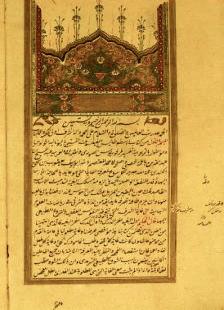
The Project
The Glossarium Graeco-Arabicum
The Greek and Arabic Lexicon was launched by Gerhard Endress in view of opening up the lexicon of the Medieval Arabic translations from the Greek. It has been partly published as an analytical reference dictionary (Endress-Gutas 2001). The images of the filecards (approx. 80.000) which have not yet been published, comprising Arabic roots from the letter jîm to the end of the Arabic alphabet, are being made available in the database Glossarium Graeco-Arabicum. Both the printed and the electronic versions make available the direct information which the Graeco-Arabic translations contain for several areas of research. These include:
- the vocabulary and syntax of Classical and Middle Arabic;
- the development of a scientific and technical vocabulary in Arabic;
- the vocabulary of Classical and Middle Greek;
- the chronology and nature of the translation movement into Arabic; and
- the establishment of the texts of Greek works and their Arabic translations.
The G2A Web Application
Frontier research in the field of computational linguistics will be put in the service of the studies of the philosophical and scientific works translated from Greek into Arabic. An unprecedented tool for parsing Graeco-Arabic texts, Pinakes Texts Greek & Arabic is the expected outcome of the ERC project Ideas, Advanced Grant 249431.
The Istituto di Linguistica Computazionale, CNR, Area della Ricerca di Pisa directed by Andrea Bozzi, is one of the leading scientific institutions in the field of text processing system development, computer assisted textual criticism and computerized linguistic corpora analysis. The ERC project Ideas, Advanced Grant 249431, implying as it does a multilingual terminology extraction, will benefit from the skills and tools housed in this institution. The ILC-CNR will contribute the following to the project:
– the fully fledged development of lexica already available into a new search engine which will be balanced and optimized for the specific needs of the project, especially for the production of Greek-Arabic contrastive concordances;
– the production of a pattern for parsing Graeco-Arabic texts,
– with special emphasis on the lemmatization of the Arabic texts, in order to allow the user to sort terms with various criteria (e.g., all the Arabic renderings of a Greek term, as different as they may be in the Arabic version).
The final step will be represented by the production of a domain lexicon semantically described in an electronic thesaurus. To this end, the ILC-CNR is currently engaged in the development of a new methodology to be put in the service of all the future critical editions of Greek-Arabic translations of philosophical and scientific works.



